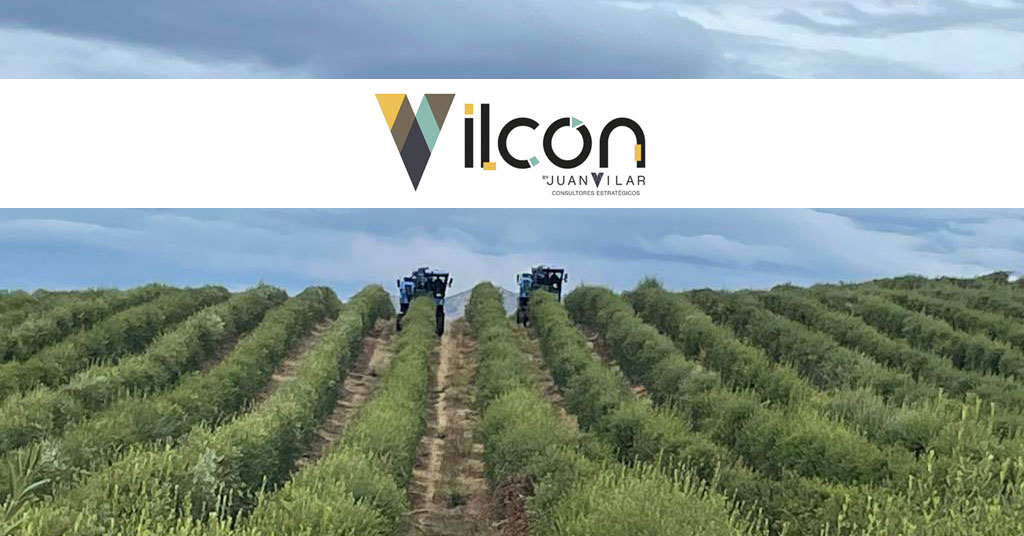The land has a total surface area of 510 million square kilometers, of which 71 percent is water, and the remaining 29 percent is land, that is, the arable land on the planet has a maximum surface area of 148 million square kilometers, or in other words, the maximum agronomic potential of the land in surface area is those 15 billion hectares, of which 11 billion hectares are already being used as cultivated land, or in other words, three quarters of the arable land is already cultivated land, of which 20 percent is irrigated land, and the remaining 80 percent is irrigated land, and the remaining 80 percent is irrigated land, In other words, three quarters of the arable land is already cultivated land, of which 20 percent is irrigated and the remaining 80 percent is rainfed, all because accessible drinking water accounts for only 3 percent of the total water contained on the planet, and of this, more than 70 percent is used in agriculture.
Therefore, land is a scarce and valuable asset, especially if it has useful water availability, not in vain, and in generic and anecdotal terms, the astrophysicist Greg Laughlin, from the University of California, established that the total value of the planet earth is 5 quadrillion euros.
However, and going into more detail, arable land on the planet does not even account for 4 percent of the total surface area, while less than 0.8 percent of the total 510 million square kilometers remain unexploited, an area slightly larger than India.
There are already more than 8,000 billion people living on the planet, 40 percent of whom have limited access to water, and 900 million lack it. In addition, slightly more than that number of people are currently chronically malnourished.
All this, together with the fact that 99.7 percent of the calories ingested by the earth’s inhabitants come from agriculture and livestock farming, has led to an explosion in the demand for land for agricultural cultivation in the world. This has been evidenced by the constant acquisition of farms by businessmen from other sectors, such as Bill Gate, who owns more than 1 million hectares of arable land in 19 states, John Malone, president of Liberty, who owns 900,000 hectares, or Ted Turner, founder of CNN, with 600,000 hectares. This strong demand for land also explains why there are currently more than 900 investment funds in the Iberian Peninsula treasuring land worth more than 100 billion euros, not including family offices and traditional farmers.
But why are Spain and Portugal the object of this demand for land?
First of all, one of the reasons is the social, economic and political stability that exists in Spain and Portugal; and another reason is to be close to or immersed in the usual markets of influence. We are referring especially to Europe and Asia, continents that demand more than 70 percent of the planet’s food.
One factor that should not be forgotten is the price of land in the Iberian Peninsula. For example, in the United States, taking California as a state similar to the idiosyncrasy of the Peninsula, the average value of land per hectare ranges between 50 and 60 thousand euros for irrigated land and between 26 and 35 thousand euros for dry land. If we refer to Europe, in the Netherlands they pay up to 85 thousand euros per hectare of irrigated land and quality. A similar example to what happens in Italy, where 65 thousand euros are reached, or France, where in exceptional cases up to 1 million euros have been paid for a hectare of vineyard in the Champagne region, although the usual is about 55 thousand euros in high quality farms; Ireland and Luxembourg also assume similar trends, 60 and 55 thousand euros respectively.
On the other hand, Spain and Portugal, due to the idiosyncrasy of their location, richness of territories and diverse climatological natures, treasure a wealth of ways, forms of cultivation, species and varieties (olive grove, almond tree, pistachio, hazelnut, avocado, red fruits, walnut, citrus, vineyard, vegetables under plastic and outdoors, etc.), both in rainfed and irrigated, all this makes it a demanded and desired geographical area.
In short, although in Spain and Portugal, depending on certain crops, and exceptionally, more than 500 thousand euros have been paid for a hectare of cultivation under plastic, 140 thousand euros for the same area of avocado or 95 thousand euros for a hectare of vineyard; the usual price of the hectare in the case of irrigated land would be between 35 thousand and 50 thousand euros, and rainfed land between 19 thousand and 25 thousand euros. These values are much lower than those analyzed for other countries, so that the standard value is still safe, and also in terms of profitability, depending on the crop, it is still possible to achieve two-digit percentage net incomes.
Therefore, the demand for land in the Iberian Peninsula is not in a bubble, and what is more, it has a great growth potential, taking into account the current trends in other countries, and the structural situation of food and population on the planet.
If you want to invest in arable land, we can help you, we have in our portfolio several investment options with high profitability. You can contact us by mail through juanvilar@juanvilar.com

